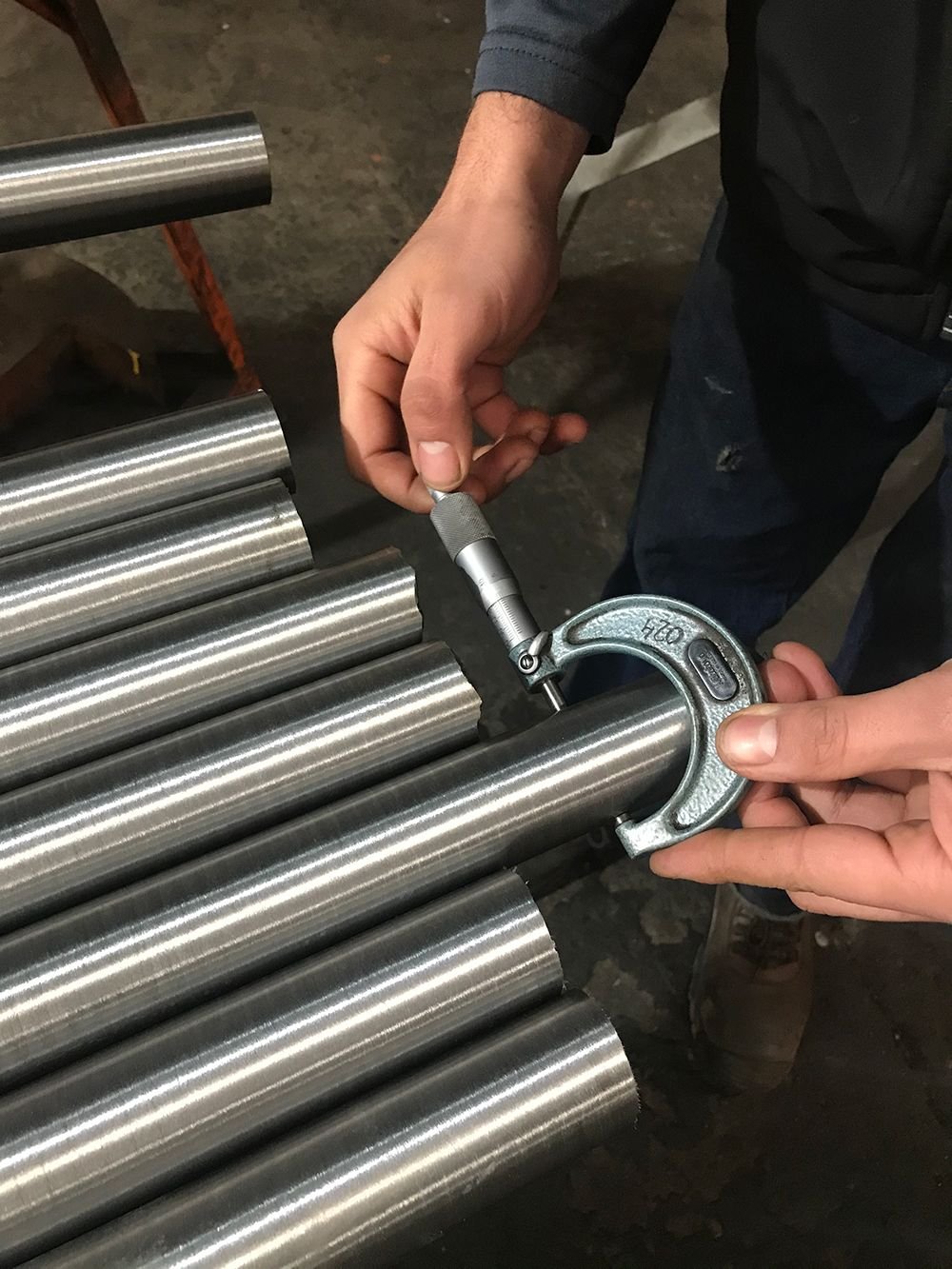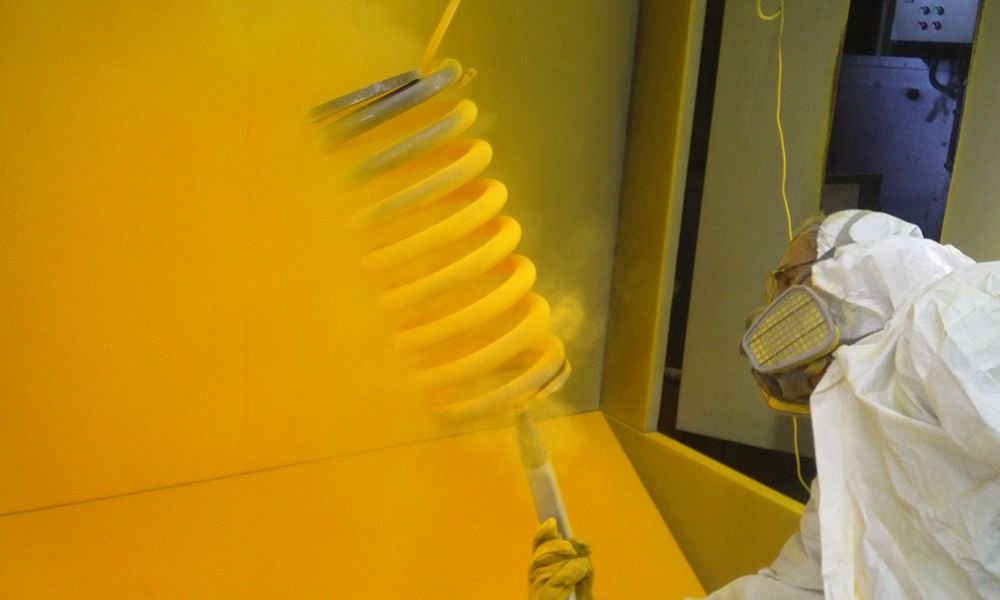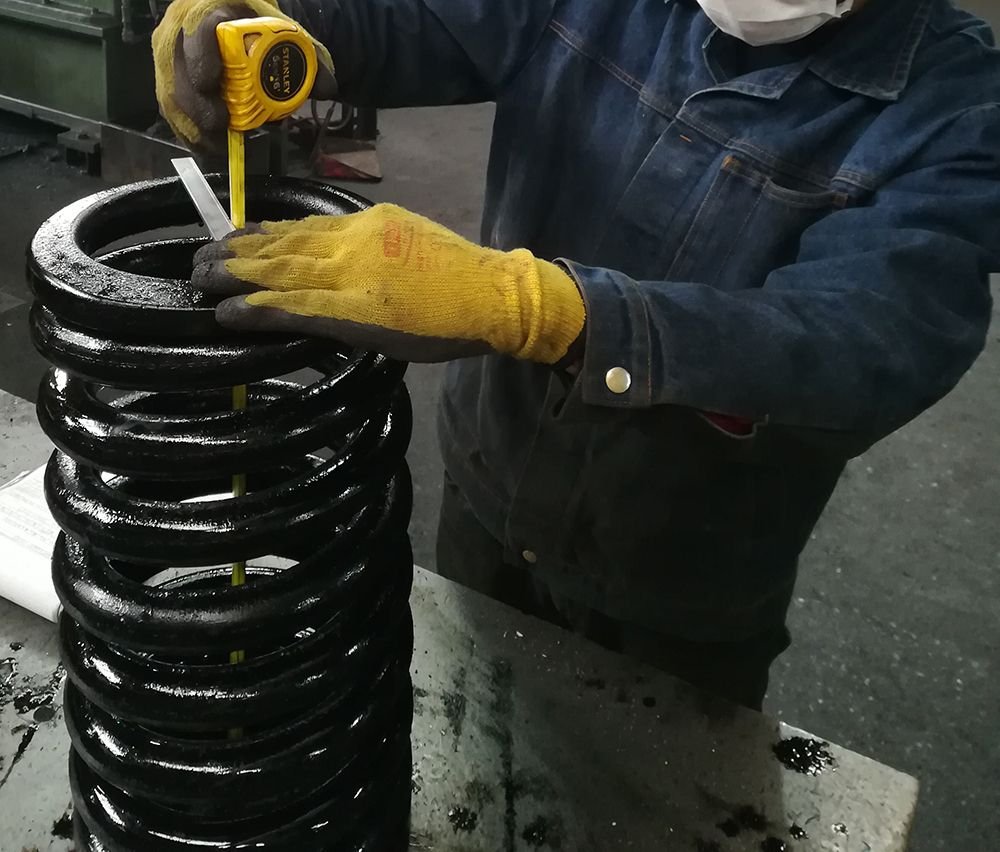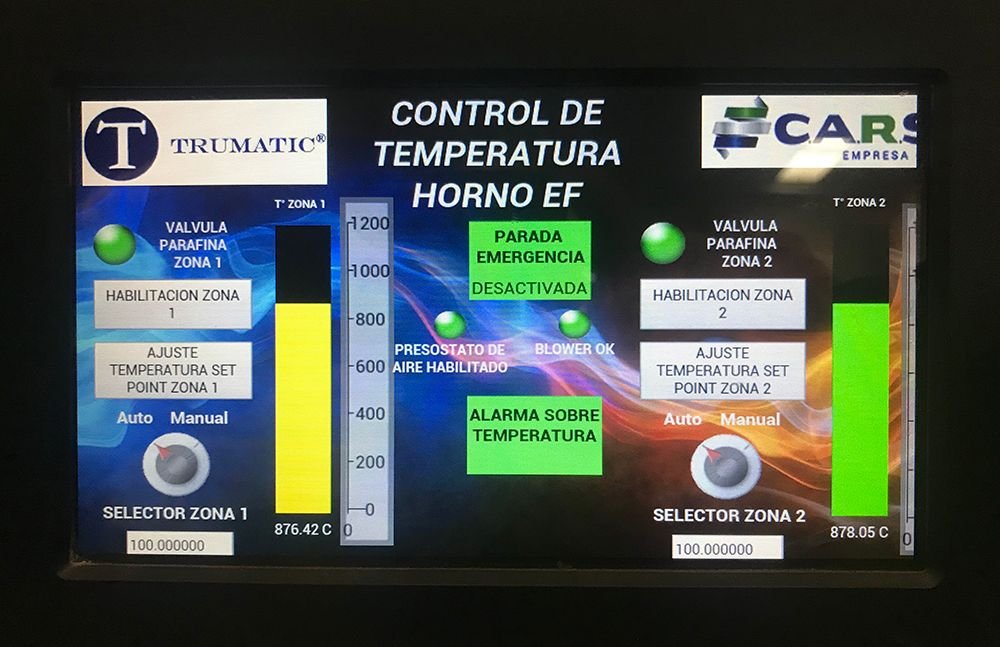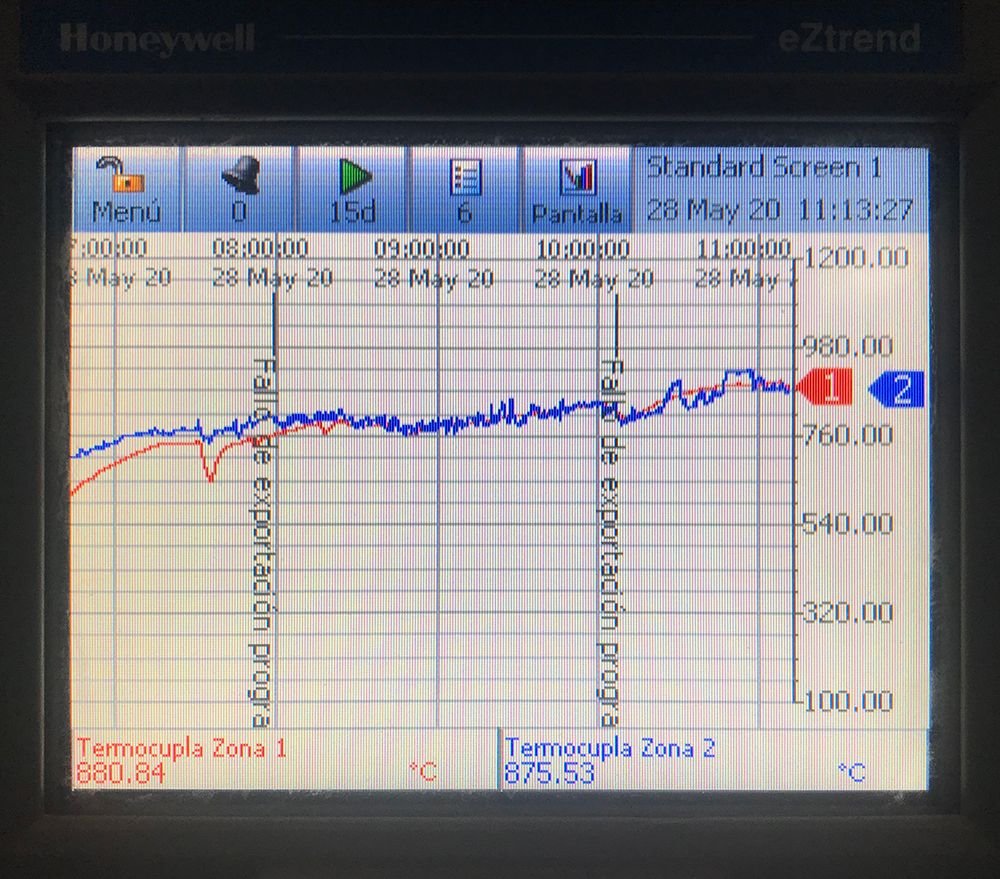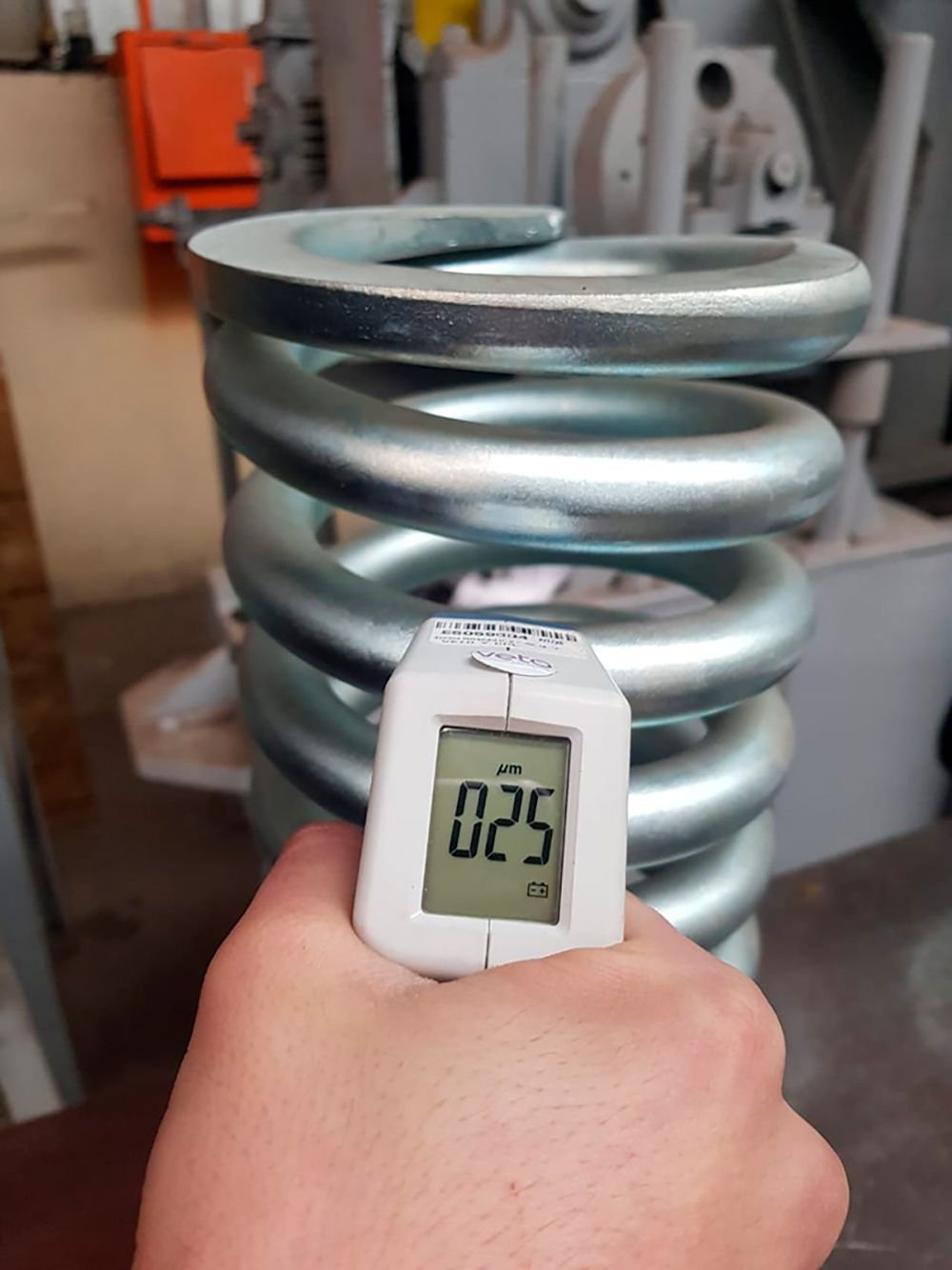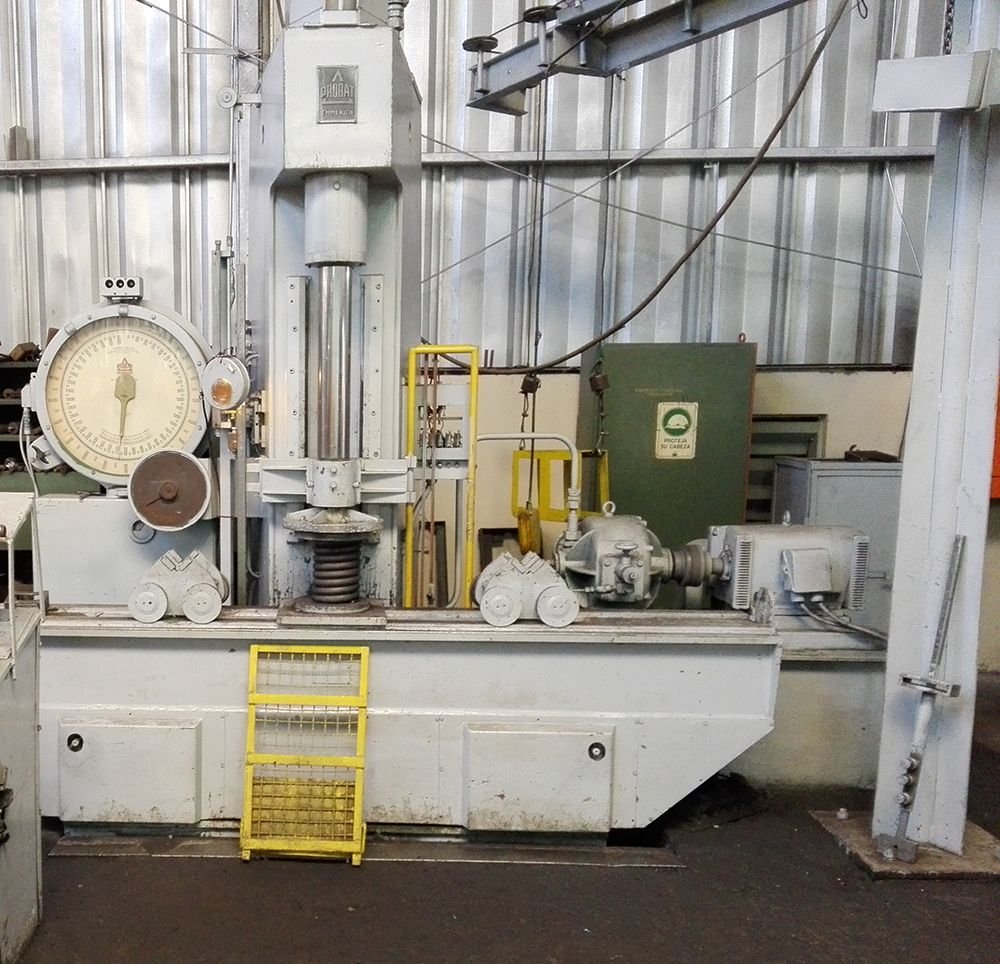The coil springs manufacturing process works under ISO 11891:2012 standards, which requires rigorous controls in every stage of the production process. Using a certified measuring instrument, previously calibrated.
Quality Control
Manufacturing Process of coil springs works under ISO 11891:2012 standards.
Metallographic analysis
Metallographic analysis are made to ensure that raw materials meet DIN 2096-1; ISO 18265:2013 Standards.Verification of the length of the wire
Using a tape measure and dial calipers, the diameter and length of the wire are verified, so that the spring complies with the technical specifications.Heat treatment and spring winding
The spring is heated in an automatically controlled atmosphere oven to an austenitization temperature, for a specific amount of time at a set temperature, after that the spring is coiled and heat treatments are carried out.Tempering
This process is used to harden and increase the strength of steel, transforming austenite into martensite.Temperature
The temperature of the oil is verified (20 °C - 65 °C), ensuring that the cooling times of the oil are greater than 3 minutes.Dimensional Quality Control
After the tempering process, the spring dimensional control is carried out. This must comply with the wire diameter, free length, total coils, outside and inside diameter, specified in the process sheet.Quenching Process
Applied to parts that have been previously tempered, to release the stresses generated by tempering and increase the toughness. Time and temperature are rigorously controlled as specified in the process sheet. The temperature depends on the wire diameter and varies between 390 °C - 470 °C.Grinding spring ends
Spring end grinding is performed to achieve flats ends, tolerance is verified by false square according to ISO 11891:2012 standards.Load Testing
After the grinding process, load tests are performed on all springs, to ensure that they comply with their free length and load capacity (spring constant) specifications.Shot peening
This process is essential to extend the lifespan of the spring up to 3 times. The impact of high speed round steel particles creates a compressive residual stress layer and modifies the mechanical properties of the spring. Almen strips are used to measure the peening intensity, to verify that meets the operational parameters established in the ISO 26910-1 standards.Anti-corrosion coating
As specified by the customer, the spring is coated with electrostatic paint or electrolytic zinc plating, which reduces oxidation, controlling the thickness with a coating gauge to ensure the corresponding microns.